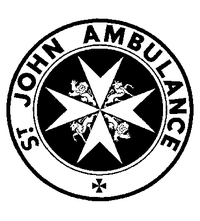


Local Sponsors
-
The Albion Snooker & Social Club Kendal
Sandes Avenue (behind Home Designs) Kendal LA9 4LL
The Albion Snooker and Social Club Kendal, Members only Club, guests welcome at £1.50 a visit. 9 top snooker tables, 4 excellent pool tables and darts.
-
St John Ambulance
27 St John's Lane, London. EC1M
St John Ambulance is the nation’s leading first aid charity. Every year, more than 400,000 people learn how to save a life through our training programmes, including hundreds of thousands of young people. Our volunteers provide first aid in their communities, keeping people safe at events, and working alongside the NHS in response to 999 calls. We’re also always campaigning to raise awareness of first aid and directly educate the public.
-
South Cumbria Rivers Trust
The Clock Tower Business Centre Low Wood, Ulverston, Cumbria. LA12 8LY
We are a Registered Charity (no. 1114682) whose purpose is to protect, conserve and rehabilitate the aquatic environments of South Cumbria. The main rivers in our area are the Kent, Leven, Bela, Crake and Duddon as well as the many smaller rivers. We also have some significant still waters in our area including Windermere, Coniston, Grasmere, Rydal, and Esthwaite.
More information
The River Kent holds the distinction of being a designated Special Area of Conservation, encompassing an expansive area of 269.6 acres (109.12 ha). This designation is primarily due to its critical role as a habitat for the White-clawed Crayfish (Austropotamobius pallipes), an endangered species. The Kent's tributaries, in particular, support thriving populations of this species, with densities surpassing most other regions in England. Additionally, the river serves as a significant site for the presence of bullhead and the endangered freshwater pearl mussel. Its classification as a watercourse spanning from plain to montane levels signifies the prevalence of water-crowfoot and water starwort populations, which, during summer, create expansive floating mats adorned with white flowers. These mats provide essential nourishment and shelter for fish and invertebrates.The river boasts notable quantities of three game fish species: salmon, brown trout, and sea trout. The Kent Angling Association, established in 1848, governs fishing activities along an approximately 8-mile (13 km) stretch around Kendal. In 1986, fish ladders were constructed alongside mill-pond dams to facilitate the migration of fish to upper sections of the river. This development significantly benefited salmon, as they swiftly embraced the newly accessible breeding grounds. Consequently, the river section above Bowston has become pivotal for the nurturing of juvenile salmon. While fish ladders have proven effective, removing certain weirs could potentially enhance the overall health of the river and, specifically, its fish populations. Notably, in 2022, approval was granted for the removal of a 19th-century weir located at Bowston.Since 1989, a comprehensive fish counter has been in operation at Basinghyll, spanning the entire width of the river. Initially, the counter could detect the passage of fish and determine their direction of travel but lacked the capability to identify individual species. However, efforts were made by the Environment Agency to employ underwater cameras for species identification. In 2013, funding from DEFRA (Department for Environment, Food and Rural Affairs) was announced to facilitate the installation of eel passes at Stramongate weir in Kendal and the Basinghyll fish counter. These eel passes were successfully implemented in July 2013.





